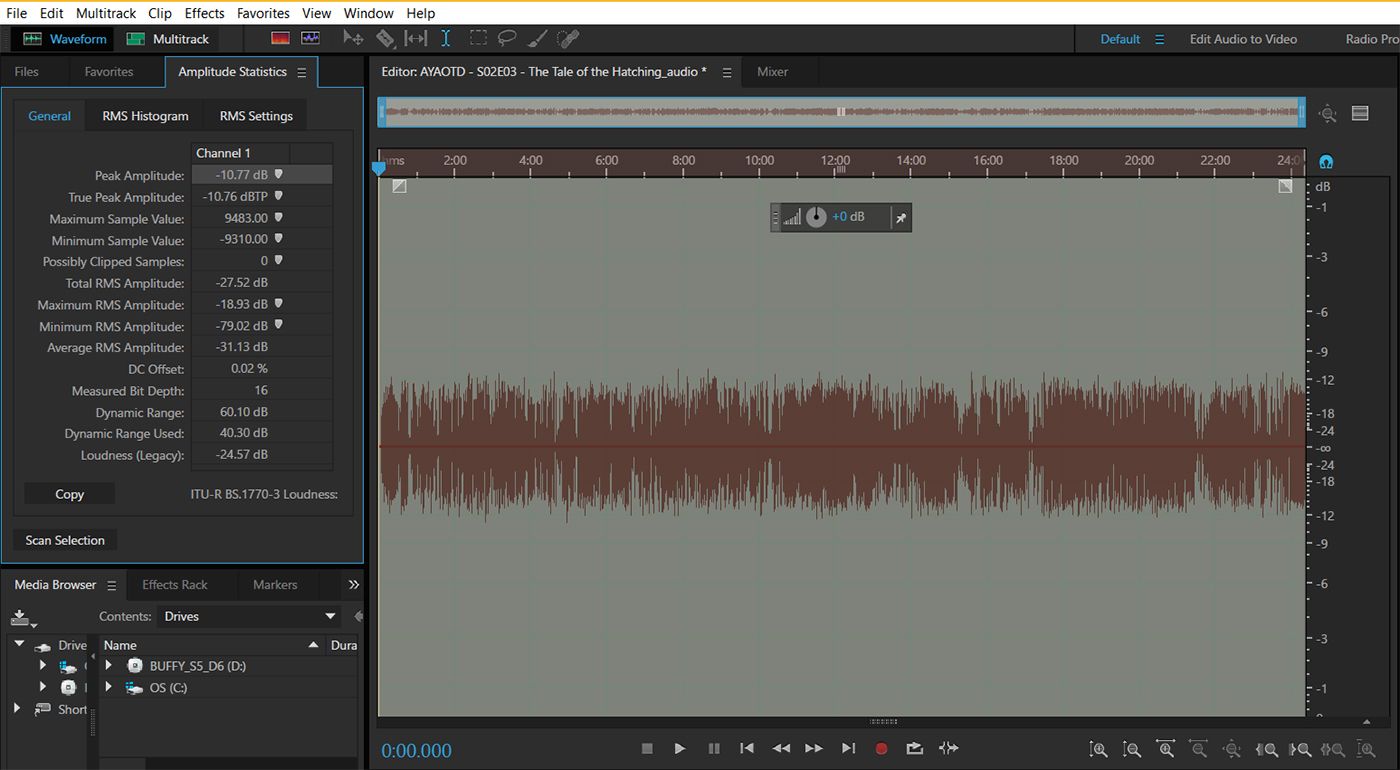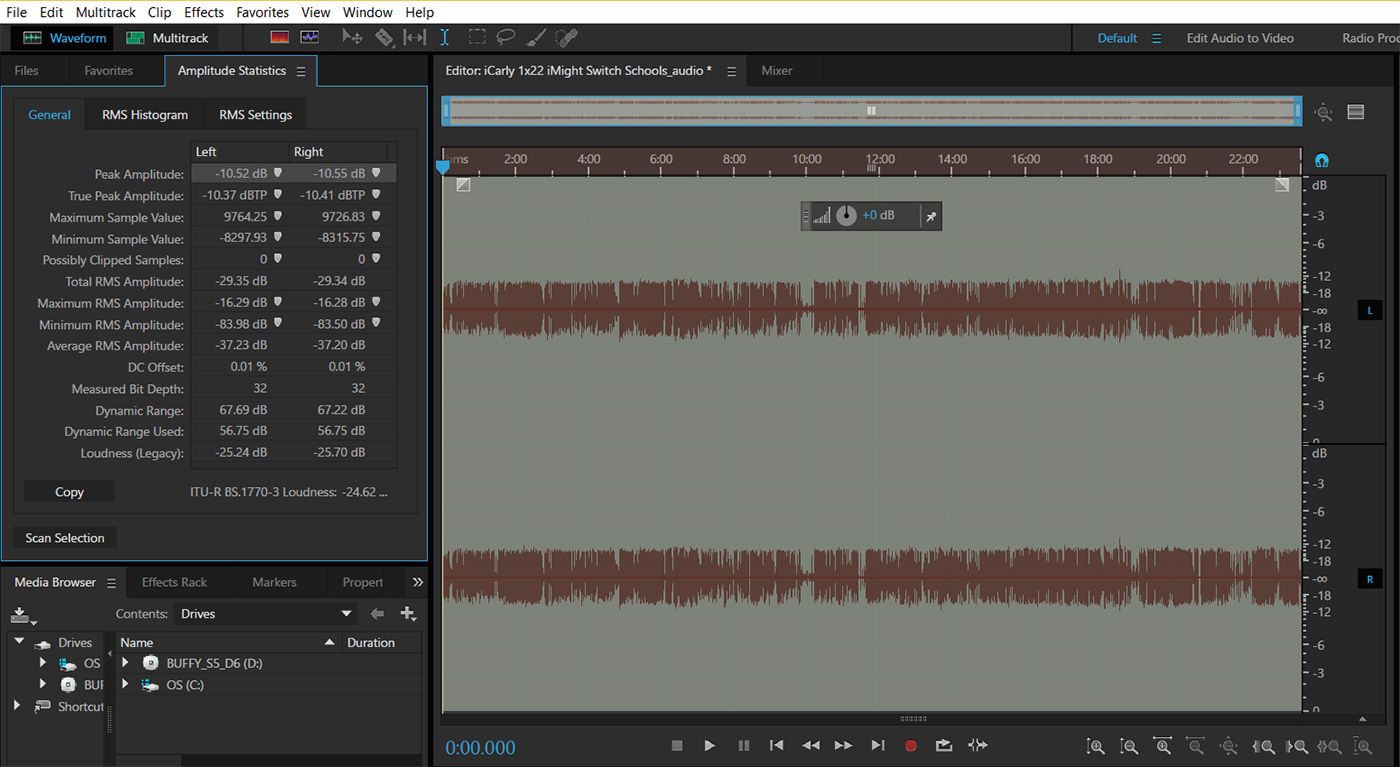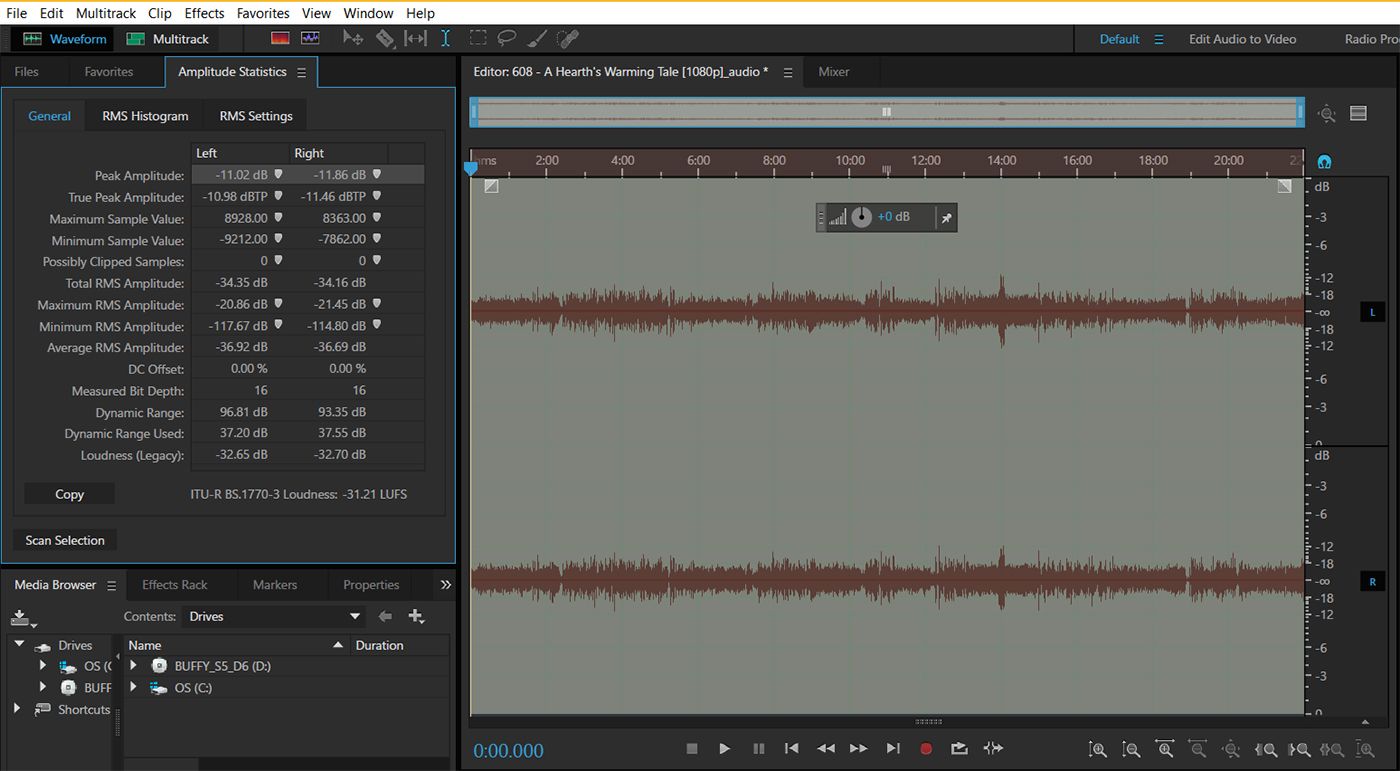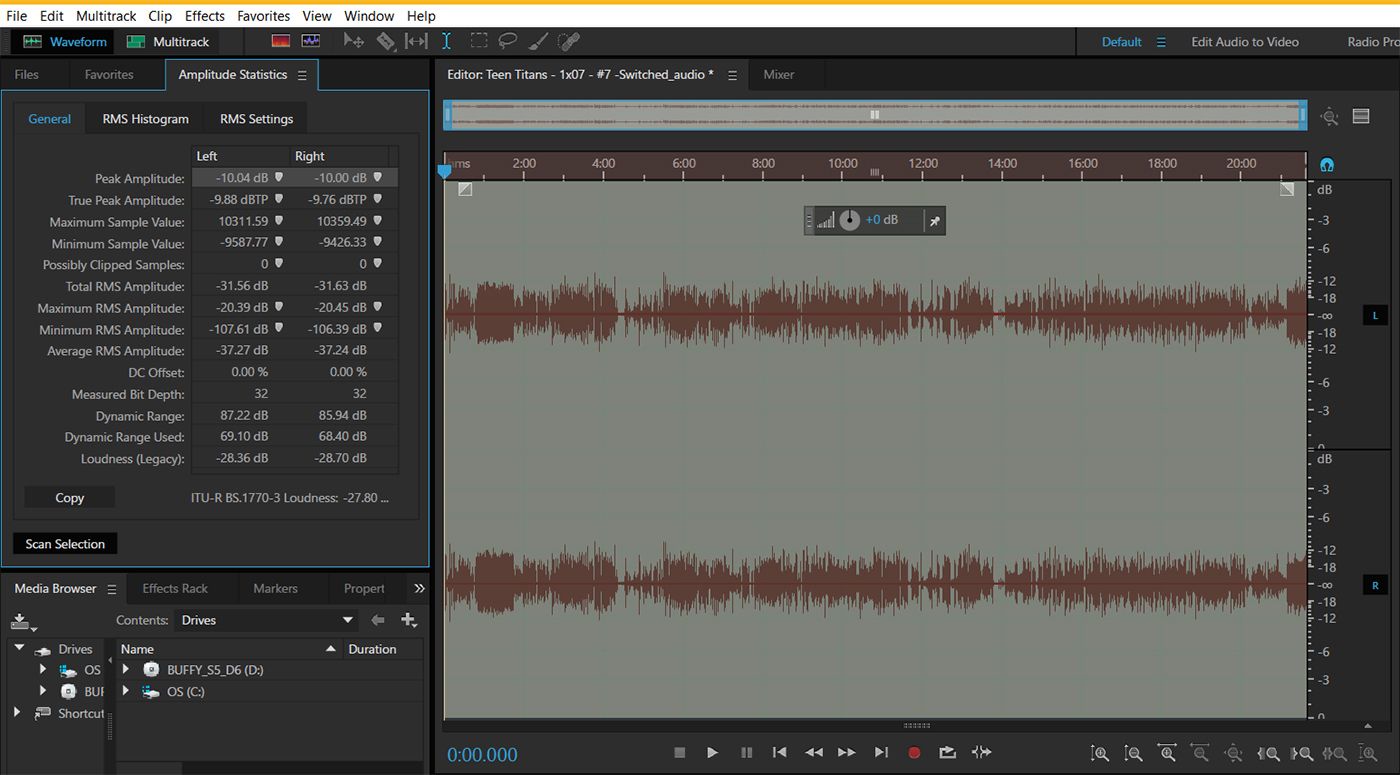- Messages
- 22,645
- Reaction score
- 2,146
- Points
- 313
There are pretty much 2 key roles to the product of music you end up listening to by the time you pop in the CD/throw your earbuds in/download from Amazon or whatever.
Nowadays, a lot of people can "self re-master" songs or albums on their own through the use of tools like Audacity.
Mixer
This aspect is basically how the instruments sit. Usually you will have separate stems (e.g. Low End Bass, High End Bass, Vocal Take 1, Vocal Take 2, Floor Toms, Kick Drum, etc.) as their own tracks. The Mixer's role is to gather all of these individual tracks and parlay them together into a cohesive "final" mix. Along with prettying up certain aspects of an instrument or vocal, the Mixer is the one that arguably sets the final volume of the vocal/instruments in the mix. So if the kick drums are overriding everything in the mix or the vocals are too upfront, that generally lands on the shoulders of the Mixer.
This is also where instruments can get panned to the left or right channels or reverb is added to a guitar. Remixes are basically what it says, somebody else doing their own mix using the original stems of the song and mixing them.
Great mixes usually require very little clean up in the mastering process.
Mastering
The most underrated aspect. He/She is the final hand in the actual track before it gets packaged, shipped, and sent out the door to land on somebody's doorstep.
This usually is where levels are done to songs so that they flow cohesively from one to the next on an album. Also EQ (equalization) may done to slightly enhance a certain instrument or shine up a mix that might be too raw or radio unfriendly.
A re-master is basically taking the original mix and mastering it again on a different level. This can work but it rarely gets pulled off very well.
Examples (of good and bad mixing/mastering)
Oasis - Wonderwall. A really great song that has an unfortunate mix made worse by the mastering being too loud in general. The vocals are in your face and tend to obscure the cello in the background (0:59 - 1:05). The drums, in particular the kick/toms, seem to battle the guitar for background space around 1:40-2:00 as well. It's hard to distinguish the actual guitar lines. I'd make an argument that the cello manages to somehow evoke the feeling of the song without being that distuinguishable either.
http://www.youtube.com/watch?v=6hzrDeceEKc
Michael Jackson - Beat It. One of the immediate things you can hear is the separation in the instruments, particular the hitting of the kick/toms in the opening 30 seconds preluding to the memorable riff of the bass guitar. Even as Michael sings the chorus, you can hear the groove of the bass guitar underneath along with the cymbal crashes. The best example of the great mix is how neatly the guitar solo sits starting at 2:55 while bass guitar & drums continue the song elements.
http://www.youtube.com/watch?v=iCCeJ_M2kEo
The Pixies - Gigantic. A really interesting song as you can kind of see the "piece by piece" aspect of the final mastering, where and what to emphasize. The emphasis of the bass in the introduction leads into the constant hi-hat sound and the vocals. The mix kind of works in spite of itself due to the battle between the vocals, bass (starting around 0:50), and the kick drum in the background. The vocals are pretty dry and one could make the argument that the chorus is intentionally muddied (aka too much going on to distinguish) for the vibe of the song. It is similar to Wonderwall in that the poppy aspect of the song so thoroughly dominates that the muddyness kind of adds to its charm, take note of the guitar at 2:45.
Frank Sinatra - That's Life. This is an interesting example of the hard panning of the 1940's/1950's/1960's era of production. Frank's voice absolutely dominates the right channel with some of the drums (namely the kick) whereas the other instruments and backup vocals are mostly panned hard left. Despite the panning, the instruments are largely background material outside of the kick but it largely works due to Frank's voice and charisma being outstanding. Singers with big voices such as Mariah Carey would benefit more from this style of vocals dominating as opposed to the inverse. That's largely why rock works better at pushing the vocals "into" the mix.
Atmosphere - Scapegoat. Hip Hop and Rap are fun to listen to because at times, they are really basic. A large percentage of the genre relies on the up front vocals, in part due to the rhyming talk style, and a deep hitting kick drum. 0:50 is a perfect example of the heavy kick drum effect. It nearly overwhelms the rest of the track. The very soft piano(?) aspect of the song is intriguing but doesn't really get played up enough in the mix to matter much.
Other Instrument/Mix Examples to Seek
LL Cool J - I Can't Live Without My Radio. Just listen to the separation of the kick, cymbals, and toms. Excellent use of separation and brief snatches of hand claps(!) and drums to create a groove itself.
http://www.youtube.com/watch?v=SavVH4W1lxc
Slayer - Angel of Death: Great example of kick drums/toms but especially lead guitar low end to accentuate the speed of the riff. In particular, check out 1:48 for the balance of guitar/kick drum.
http://www.youtube.com/watch?v=q_ILACWNhCk
Britney Spears - Hit Me Baby One More Time: That kick drum, good lord. The mix itself works incredibly well, take note of the subtle bass driving the groove while Britney's vocals take point but still allow enough air to let the other instruments stand out too. A perfect example of how a mix can make a pop hit as much as the song itself. There is a lot of little stuff going on and nothing seems overwhelmed. Check out the brief piano appearance at 2:07 too.
http://www.youtube.com/watch?v=WELXZvJO8dY
Outkast - Rosa Parks: Another good example of the effective use of panning to channels. A good use of hi-hats and toms and what sounds like very low end use of cello(?). Take note of the female vocals at around the 3:49 mark.
http://www.youtube.com/watch?v=0jRxEfMUyQ8
Blind Melon - No Rain: A really effective blending of vocals, lead guitar, and bass guitar that is usually hard to accomplish, especially in the opening 0:30. You can hear a slight panning between the lead and bass too. The toms are a little buried starting at 2:00 but really, this song is all about the riffs so it's understandable. An example of sacrificing an instrument to focus on the "meat" of the song.
Metallica - Master of Puppets: Take note of the "clean" lead guitar in the introduction and the somewhat muted bass in the background. The vocals are drenched in reverb too. One of the more unique things is the reliance on the cymbals in the drum kit whilst keeping the drums in the background and pushing the vocals/lead guitar up front. Take note of the bass dominating in the instrumental section too with the guitar accentuating it starting at 3:40.
http://www.youtube.com/watch?v=Ufj2TO7m6Q4
Nowadays, a lot of people can "self re-master" songs or albums on their own through the use of tools like Audacity.
Mixer
This aspect is basically how the instruments sit. Usually you will have separate stems (e.g. Low End Bass, High End Bass, Vocal Take 1, Vocal Take 2, Floor Toms, Kick Drum, etc.) as their own tracks. The Mixer's role is to gather all of these individual tracks and parlay them together into a cohesive "final" mix. Along with prettying up certain aspects of an instrument or vocal, the Mixer is the one that arguably sets the final volume of the vocal/instruments in the mix. So if the kick drums are overriding everything in the mix or the vocals are too upfront, that generally lands on the shoulders of the Mixer.
This is also where instruments can get panned to the left or right channels or reverb is added to a guitar. Remixes are basically what it says, somebody else doing their own mix using the original stems of the song and mixing them.
Great mixes usually require very little clean up in the mastering process.
Mastering
The most underrated aspect. He/She is the final hand in the actual track before it gets packaged, shipped, and sent out the door to land on somebody's doorstep.
This usually is where levels are done to songs so that they flow cohesively from one to the next on an album. Also EQ (equalization) may done to slightly enhance a certain instrument or shine up a mix that might be too raw or radio unfriendly.
A re-master is basically taking the original mix and mastering it again on a different level. This can work but it rarely gets pulled off very well.
Examples (of good and bad mixing/mastering)
Oasis - Wonderwall. A really great song that has an unfortunate mix made worse by the mastering being too loud in general. The vocals are in your face and tend to obscure the cello in the background (0:59 - 1:05). The drums, in particular the kick/toms, seem to battle the guitar for background space around 1:40-2:00 as well. It's hard to distinguish the actual guitar lines. I'd make an argument that the cello manages to somehow evoke the feeling of the song without being that distuinguishable either.
http://www.youtube.com/watch?v=6hzrDeceEKc
Michael Jackson - Beat It. One of the immediate things you can hear is the separation in the instruments, particular the hitting of the kick/toms in the opening 30 seconds preluding to the memorable riff of the bass guitar. Even as Michael sings the chorus, you can hear the groove of the bass guitar underneath along with the cymbal crashes. The best example of the great mix is how neatly the guitar solo sits starting at 2:55 while bass guitar & drums continue the song elements.
http://www.youtube.com/watch?v=iCCeJ_M2kEo
The Pixies - Gigantic. A really interesting song as you can kind of see the "piece by piece" aspect of the final mastering, where and what to emphasize. The emphasis of the bass in the introduction leads into the constant hi-hat sound and the vocals. The mix kind of works in spite of itself due to the battle between the vocals, bass (starting around 0:50), and the kick drum in the background. The vocals are pretty dry and one could make the argument that the chorus is intentionally muddied (aka too much going on to distinguish) for the vibe of the song. It is similar to Wonderwall in that the poppy aspect of the song so thoroughly dominates that the muddyness kind of adds to its charm, take note of the guitar at 2:45.
Frank Sinatra - That's Life. This is an interesting example of the hard panning of the 1940's/1950's/1960's era of production. Frank's voice absolutely dominates the right channel with some of the drums (namely the kick) whereas the other instruments and backup vocals are mostly panned hard left. Despite the panning, the instruments are largely background material outside of the kick but it largely works due to Frank's voice and charisma being outstanding. Singers with big voices such as Mariah Carey would benefit more from this style of vocals dominating as opposed to the inverse. That's largely why rock works better at pushing the vocals "into" the mix.
Atmosphere - Scapegoat. Hip Hop and Rap are fun to listen to because at times, they are really basic. A large percentage of the genre relies on the up front vocals, in part due to the rhyming talk style, and a deep hitting kick drum. 0:50 is a perfect example of the heavy kick drum effect. It nearly overwhelms the rest of the track. The very soft piano(?) aspect of the song is intriguing but doesn't really get played up enough in the mix to matter much.
Other Instrument/Mix Examples to Seek
LL Cool J - I Can't Live Without My Radio. Just listen to the separation of the kick, cymbals, and toms. Excellent use of separation and brief snatches of hand claps(!) and drums to create a groove itself.
http://www.youtube.com/watch?v=SavVH4W1lxc
Slayer - Angel of Death: Great example of kick drums/toms but especially lead guitar low end to accentuate the speed of the riff. In particular, check out 1:48 for the balance of guitar/kick drum.
http://www.youtube.com/watch?v=q_ILACWNhCk
Britney Spears - Hit Me Baby One More Time: That kick drum, good lord. The mix itself works incredibly well, take note of the subtle bass driving the groove while Britney's vocals take point but still allow enough air to let the other instruments stand out too. A perfect example of how a mix can make a pop hit as much as the song itself. There is a lot of little stuff going on and nothing seems overwhelmed. Check out the brief piano appearance at 2:07 too.
http://www.youtube.com/watch?v=WELXZvJO8dY
Outkast - Rosa Parks: Another good example of the effective use of panning to channels. A good use of hi-hats and toms and what sounds like very low end use of cello(?). Take note of the female vocals at around the 3:49 mark.
http://www.youtube.com/watch?v=0jRxEfMUyQ8
Blind Melon - No Rain: A really effective blending of vocals, lead guitar, and bass guitar that is usually hard to accomplish, especially in the opening 0:30. You can hear a slight panning between the lead and bass too. The toms are a little buried starting at 2:00 but really, this song is all about the riffs so it's understandable. An example of sacrificing an instrument to focus on the "meat" of the song.
Metallica - Master of Puppets: Take note of the "clean" lead guitar in the introduction and the somewhat muted bass in the background. The vocals are drenched in reverb too. One of the more unique things is the reliance on the cymbals in the drum kit whilst keeping the drums in the background and pushing the vocals/lead guitar up front. Take note of the bass dominating in the instrumental section too with the guitar accentuating it starting at 3:40.
http://www.youtube.com/watch?v=Ufj2TO7m6Q4







